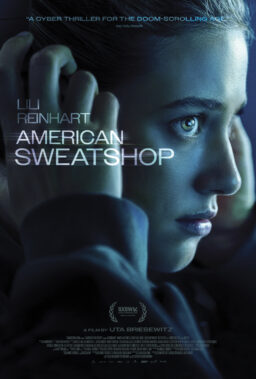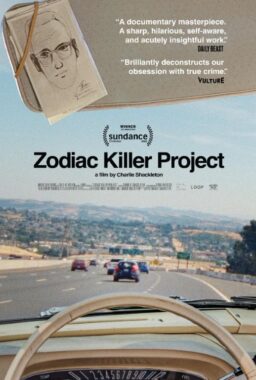Robert Bresson is a rare genius of the cinema, little known to the public, although serious movie lovers discover him sooner or later. His films are not easy to find on the big screen, which is why this complete retrospective at the Film Center of the Art Institute, running through May 9, is a landmark. All 13 of his features will be shown in new 35mm prints.
Still alive in France at 92, Bresson worked on his first film in 1933 and his last in 1983; none were popular successes, but they’re treasured all over the world. During 50 years when other directors were learning to copy box office hits, Bresson developed a rigorous personal style. Like Ozu from Japan, a director with whom he is often linked, he saw his films as a way to explore the mystery of human life. Why do we endure? What is our reward? What is goodness and how can we achieve it?
His films are almost always about characters (in one case, a donkey) who seek personal redemption. One is a country priest, mocked by his parishioners because he believes too seriously. One is a pickpocket, who seeks to stand outside common society. Like Dostoyevsky, whose works he has filmed, Bresson is fascinated by characters who reject ordinary values.
His working methods are famous. He doesn’t want reality, but transcendence. His actors (whom he refers to as “models”) are required to repeat the same scene over and over, until spontaneity is drained and a kind of pure essence is revealed. His films are not a record of performances. They are the performances themselves, and the actors are materials like the light, the settings, and the sound.
Once you accept his methods, you may find his films haunting to watch and difficult to forget. They are an acquired taste; Pauline Kael famously wrote that “while some people find them awesomely beautiful, other people find sitting through them like taking a whipping and watching every stroke coming.” I find them beautiful. I taught a course on Bresson several years ago at the University of Chicago, and found that when you see them in a group over a short span of time, you get inside their logic and understand their pacing and rigor. They expand in your memory.
Consider the hero of “A Man Escaped” (1956), inspired by Bresson’s memories of being a Nazi prisoner. Shot entirely inside a prison fortress, it is based on the true experiences of a man named Andre Decigny, who tries to escape by observing the world around him in minute detail and finding its chinks.
Most escape movies (I think of “Papillon,” “The Great Escape,” “Escape From Alcatraz”) are adventure stories. It may help you to imagine “A Man Escaped” if I say that the music is Mozart’s Mass in C Minor. The “model,” Francois Letrerrier, was not a professional actor but a philosophy student, and he approaches escape as a form of meditation, repeating the same prison routines every day, but learning from them, and speculating on how they can be invisibly altered to his advantage.
Bresson works against the usual movie suspense conventions. In “Pickpocket” (1959), the hero’s fear is not that he will be caught, but that he will lack the will to go ahead with his plan. He is mesmerized by the challenge of invading a victim’s personal space – of stealing his money – and he sees this as a kind of honor. He is above the need to earn money. He is in that special class of those who can simply take it, if they dare. The tension in “Pickpocket” doesn’t involve police and capture, but whether the hero’s audacious self-image will survive.
Here is the complete Film Center schedule:
“Les Anges du Peche” (1943): 6 p.m. Friday. Daughter of rich family enters convent and tries to save a wayward girl.
“Les Dames du Bois de Boulogne” (1945): 8 p.m. Friday. Jilted lover gets revenge by steering man toward marriage with a prostitute.
“Diary of a Country Priest” (1950): 6 p.m. Saturday; 8 p.m. Sunday. Dying priest tries to serve indifferent parishioners.
“A Man Escaped” (1956): 8 p.m. Thursday; 6 p.m. April 9.
“Pickpocket” (1959): 6 p.m. April 16-17.
“Au Hasard Balthazar” (1966): 7:30 p.m. April 16; 7:30 p.m. April 17. Interlocking stories of a young farmer’s daughter and a donkey, both cruelly passed from hand to hand.
“Four Nights of a Dreamer” (1971): 6 p.m. April 23-24. Version of Dostoyevsky’s White Nights, about a painter who saves, then loses, a woman.
“The Trial of Joan of Arc” (1961) and “The Way to Bresson” (documentary, 1983): 8 p.m. April 23-24. Said New York film festival director Richard Roud: “For the first time in film history, one feels that Joan was really burnt.”
“Mouchette” (1969): 6 p.m. April 30. Outcast village girl grows enveloped in sadness.
“Une Femme Douce” (“A Gentle Creature”) (1969): 7:45 p.m. April 30. Modern version of Dostoyevsky’s A Gentle Creature, in which a stockbroker’s wife is oppressed and imprisoned by marriage.
“Lancelot du Lac” (1973): 6 p.m. May 7-8. Retelling of Arthurian legend, not an adventure but a meditation on chivalry.
“The Devil Probably” (1977): 6 p.m. May 7-8.
“L’Argent” (1983): 2 and 4 p.m. May 9. Young man unwittingly passes counterfeit note, setting into motion a strange chain of moral circumstances.











